Take Me to The Recipes
Embark on a culinary adventure as we invite you to ‘Savor the Magic’ with our curated collection of irresistible Belgium recipes. From hearty stews to delectable desserts, unlock the secrets to authentic flavors that will transport your taste buds to the heart of Belgium.
Let the gastronomic journey begin.
You may also Enjoy the Following Articles
- Belgium Food – Everything you wanted to know
- North and South American Cuisine – A Culinary Expedition
- European Cuisine: Savor the Continent’s Best Culinary Secrets!
- African Cuisine: Discover the Bold Flavors & Global Charm!
- Asian Cuisine Unlock its Secrets – Taste, Health & Global Influence!
- Oceania Cooking: A Culinary Journey Through the Pacific
Where is Belgium?

Savor iconic Belgium Cuisine – Click on each tantalizing picture to open up the Recipe
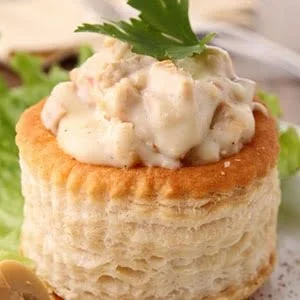
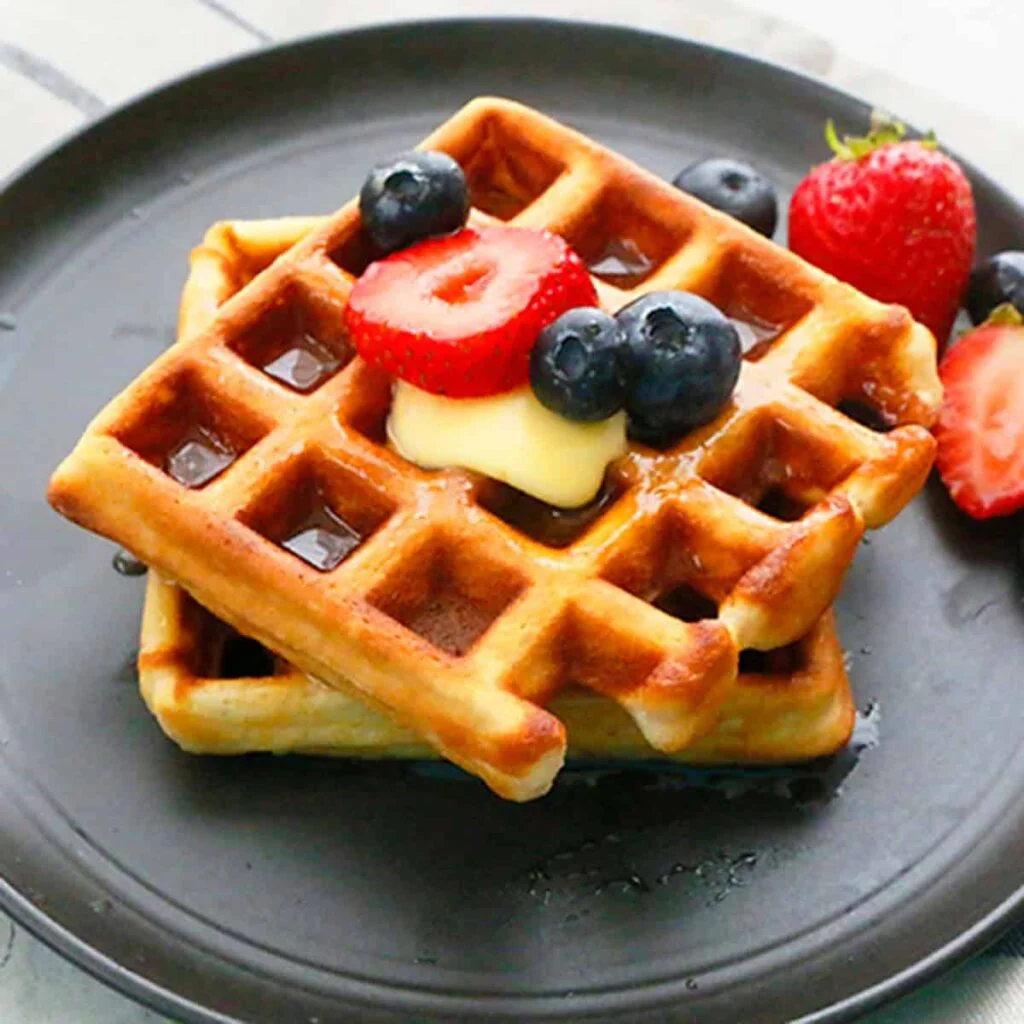

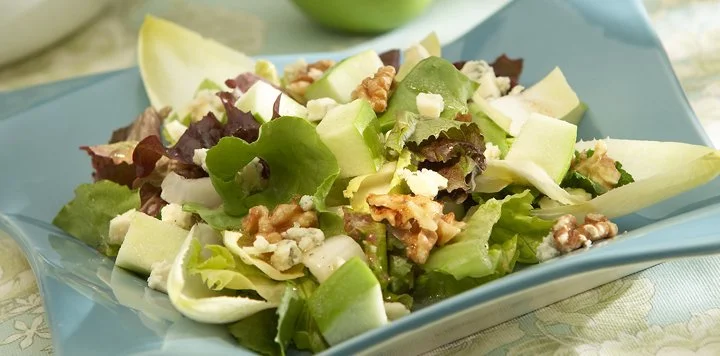

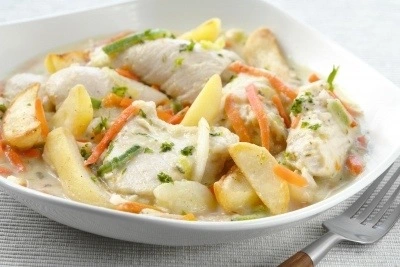
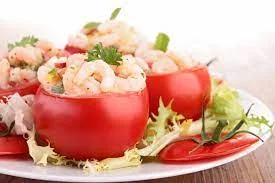
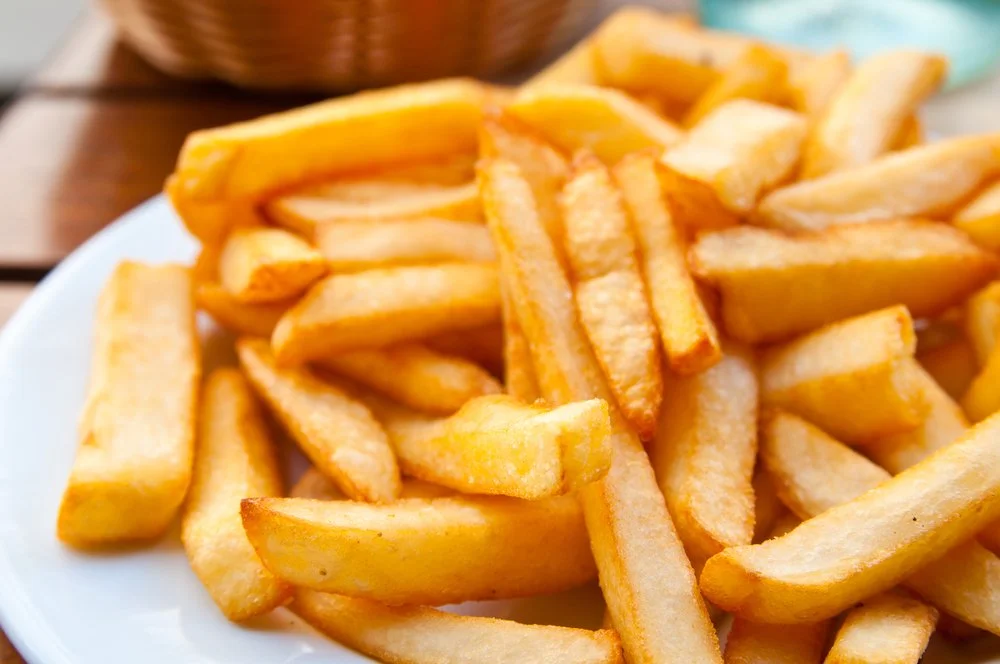
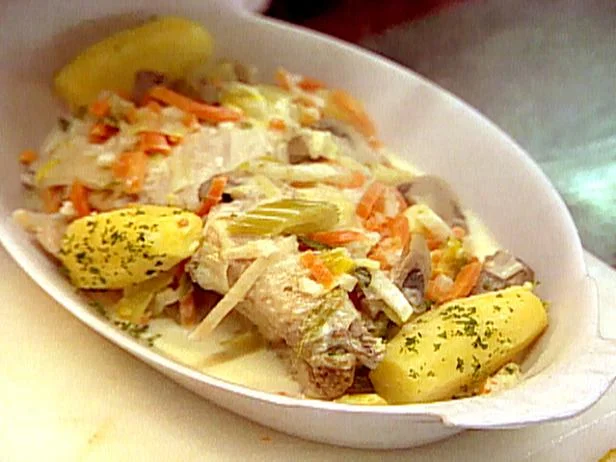
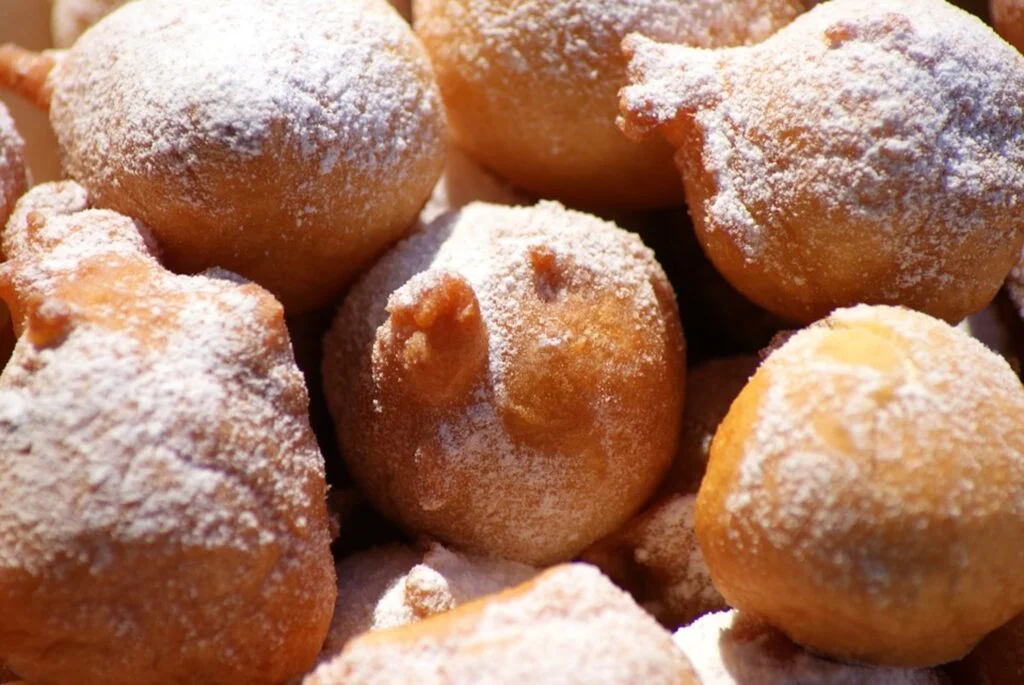
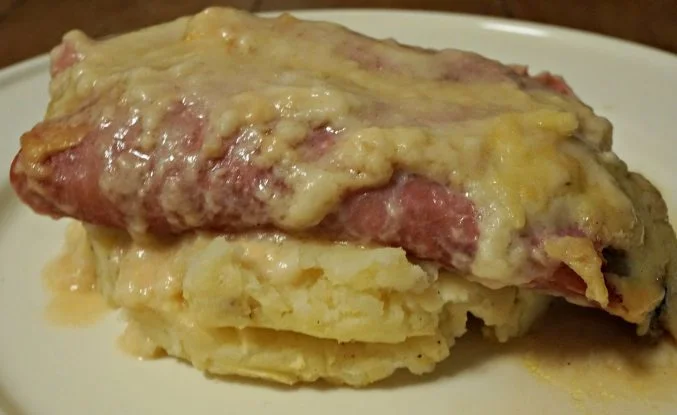
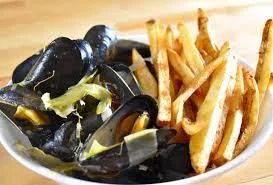
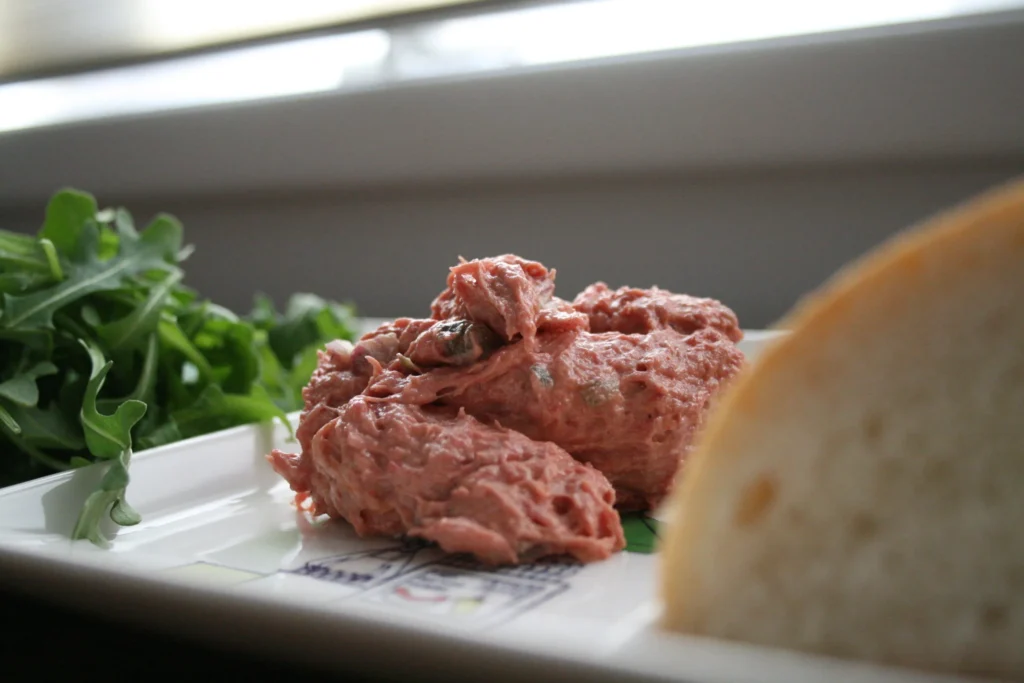
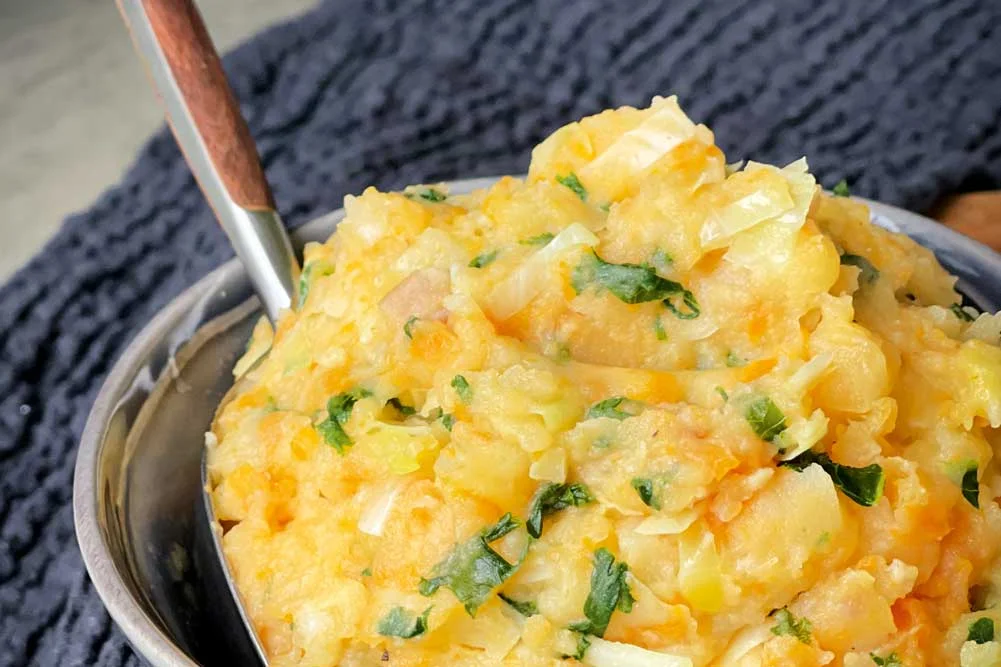
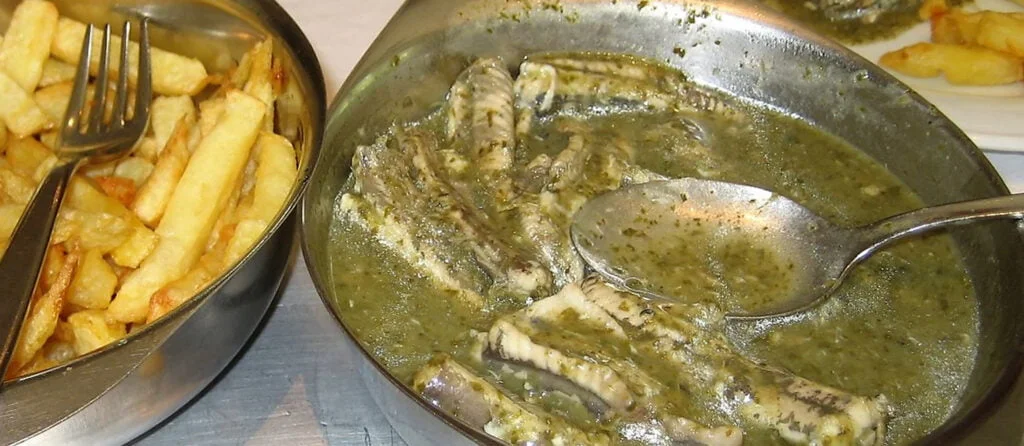
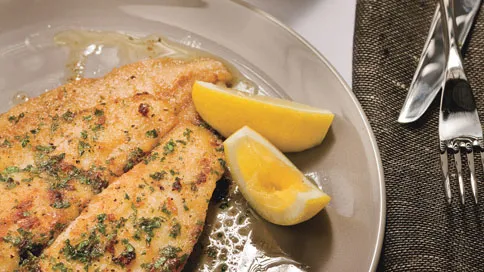
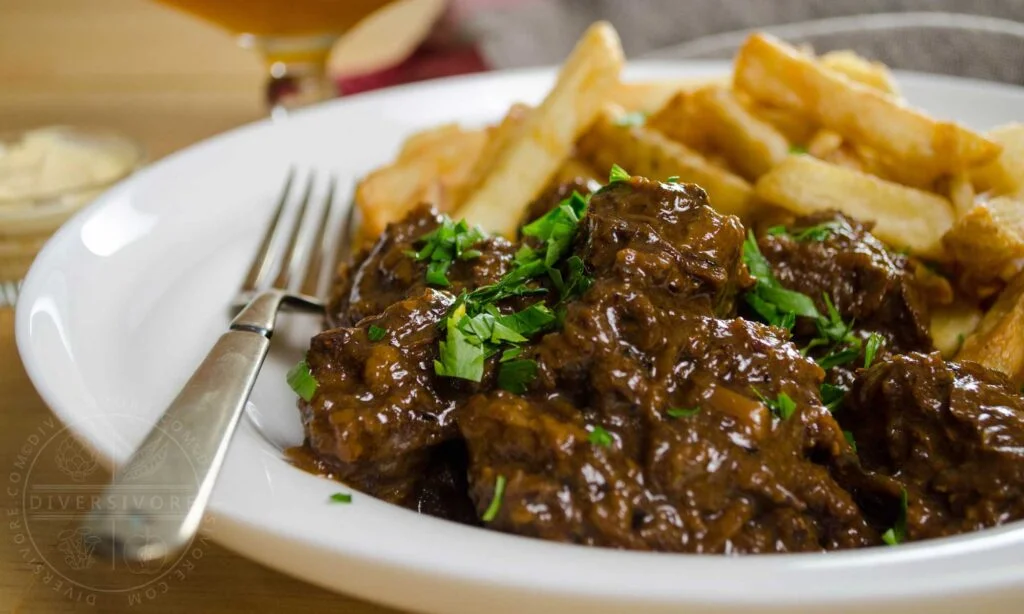
Belgium Recipes
Ready to bring the enchanting flavors of Belgium into your own kitchen? Our curated collection of authentic recipes invites you to embark on a hands-on culinary journey.
From the comforting embrace of Flemish Stew to the sweet symphony of Belgian Waffles, each recipe promises to transport your taste buds to the heart of Belgium. Whether you’re a seasoned chef or an enthusiastic home cook, get ready to unlock the secrets behind these delectable dishes and create a gastronomic masterpiece right in your own home.
Belgium Cuisine – Flemish Stew (Carbonade flamande or stoofvlees)

History and Background: Flemish Stew, known as Carbonade flamande or stoofvlees, is a traditional Belgian dish hailing from the Flanders region. This hearty stew reflects the rich culinary heritage of Belgium, with its roots tracing back to the Middle Ages. Originally a simple dish made with available ingredients, it has evolved into a beloved comfort food characterized by slow-cooked beef, flavorful onions, and the distinctive addition of Belgian beer.
Belgium Cuisine – Flemish Stew Ingredients
- 2 lbs (about 1 kg) beef chuck or stewing beef, cut into cubes
- 4 large onions, thinly sliced
- 2 cloves garlic, minced
- 2 tbsp all-purpose flour
- 2 tbsp brown sugar
- 2 tbsp tomato paste
- 2 cups (475 ml) Belgian beer (such as a dark ale or stout)
- 1 cup (240 ml) beef broth
- 2 bay leaves
- 1 sprig of thyme
- 2 tbsp Dijon mustard
- Salt and pepper to taste
- 2 tbsp vegetable oil for cooking
Belgium Cuisine – Flemish Stew Recipe
Prepare the Beef
- Pat the beef cubes dry and season with salt and pepper.
- In a large pot or Dutch oven, heat vegetable oil over medium-high heat.
- Brown the beef cubes in batches, ensuring they develop a golden crust.
- Set aside the browned beef.
- In the same pot, add more oil if needed and sauté the sliced onions until caramelized.
- Add minced garlic and cook for an additional minute.
Create the Flavor Base
- Sprinkle flour over the onions and garlic, stirring constantly for about 2 minutes.
- This helps thicken the stew.
- Incorporate brown sugar to enhance the sweetness, balancing the flavors.
- Stir in the tomato paste, allowing it to cook for a couple of minutes to develop a deep flavor.
Deglaze with Beer
- Pour in the Belgian beer, scraping the bottom of the pot to release any flavorful bits. B
- ring it to a gentle boil.
Reintroduce Beef
- Return the seared beef cubes to the pot, ensuring they are well-coated in the flavorful mixture.
- Pour in the beef broth, add bay leaves, thyme, and Dijon mustard.
- Stir well and bring the stew to a simmer.
- Reduce the heat to low, cover the pot, and let it simmer for about 2 to 2.5 hours, or until the beef becomes fork-tender.
- Stir occasionally.
Adjust Seasoning
Taste and adjust the seasoning with salt and pepper as needed.
Serve and Enjoy
Remove bay leaves and thyme sprig. Serve the Flemish Stew over mashed potatoes, fries, or with crusty bread to soak up the flavorful sauce.
Indulge in the rich flavors of Belgium with this classic Flemish Stew, a dish that embodies the warmth and tradition of Belgian cuisine.
Return to the Main Belgium Page
Belgium Cuisine – Sole Meunière

History and Background
Sole meunière is a classic Belgian dish celebrated for its simplicity and exquisite taste. Originating from French-Belgian culinary traditions, this dish gained popularity in the 19th and 20th centuries.
The dish showcases the delicate flavor of sole fish, paired with a buttery and lemony sauce, creating a harmonious culinary experience that highlights the essence of fresh seafood.
Belgium Cuisine – Sole Meunière Ingredients
- 4 sole fillets (about 6-8 ounces each)
- 1 cup (125g) all-purpose flour
- Salt and pepper to taste
- 6 tablespoons (85g) unsalted butter
- 2 tablespoons vegetable oil
- 1 lemon, thinly sliced
- 3 tablespoons fresh lemon juice
- 2 tablespoons chopped fresh parsley, for garnish
Belgium Cuisine – Sole Meunière Recipe
Prepare the Sole
- Pat the sole fillets dry with paper towels.
- Season both sides with salt and pepper.
Dredge in Flour:
- Dredge the sole fillets in flour, shaking off any excess.
Heat Oil and Butter:
- In a large skillet, heat 3 tablespoons of butter and 2 tablespoons of vegetable oil over medium-high heat.
Cook the Sole:
- Place the dredged sole fillets into the skillet, cooking for about 2-3 minutes per side until they turn golden brown and are cooked through.
- Be gentle when flipping.
Transfer to Plate:
- Once cooked, transfer the sole fillets to a serving plate and keep warm.
Prepare Meunière Sauce:
- In the same skillet, add the remaining butter and let it melt until it starts to brown slightly.
- Add lemon slices to the skillet and cook briefly until they become fragrant.
- Pour in the fresh lemon juice, allowing it to sizzle in the hot butter.
- Immediately pour the meunière sauce over the cooked sole fillets.
Garnish and Serve:
- Sprinkle chopped fresh parsley over the fish for garnish.
- Serve the sole meunière immediately while the fish is hot and the sauce is rich and flavorful.
Pairing:
- Sole meunière pairs well with simple sides like steamed vegetables, roasted potatoes, or a fresh green salad.
Indulge in the refined elegance of Belgian cuisine with this delightful Sole Meunière. The delicate texture of sole meets the rich flavors of browned butter and lemon, creating a dish that’s timeless and unforgettable
Return to the Main Belgium Page
Belgium Cuisine – Chicons au gratin

History and Background
Chicons au gratin, also known as Belgian endive gratin, is a classic dish that highlights the bitter-sweet flavor of Belgian endives. Originating from the French-Belgian culinary tradition, this gratin dish beautifully combines the slight bitterness of endives with the rich and creamy flavors of the gratin preparation.
The dish reflects the Belgian love for locally grown produce and a harmonious blend of contrasting tastes.
Belgium Cuisine – Chicons au gratin Ingredients
- 6 to 8 Belgian endives
- 2 tablespoons unsalted butter
- 2 tablespoons all-purpose flour
- 1 1/2 cups (360 ml) milk
- 1 cup (100g) grated Gruyère cheese
- Salt and pepper to taste
- Nutmeg (optional), for seasoning
- Fresh lemon juice, for blanching endives
- Breadcrumbs (optional), for topping
Belgium Cuisine – Chicons au gratin Recipe
Prepare the Endives
- Trim the base of each endive and remove any damaged outer leaves.
- Cut a small, shallow “V” shape into the base to help reduce bitterness.
- In a large pot, bring water to a boil.
- Add a splash of fresh lemon juice to the boiling water.
- Blanch the endives for about 5-7 minutes, or until they are slightly softened.
- Drain and set aside.
Make the Béchamel Sauce
- In a saucepan, melt butter over medium heat.
- Stir in flour to create a roux, cooking for a minute or two without letting it brown.
- Gradually whisk in the milk until a smooth béchamel sauce forms. Cook until thickened.
- Season the béchamel with salt, pepper, and nutmeg to taste.
- Stir in half of the grated Gruyère cheese until it’s fully melted into the sauce. Remove from heat.
Wrap Endives
- Wrap each blanched endive with a slice of ham.
- Place the wrapped endives in a greased baking dish.
- Pour the Gruyère-infused béchamel sauce over the endives, ensuring they are well-covered.
- Sprinkle the remaining Gruyère cheese on top.
- Optionally, add a layer of breadcrumbs for a crispy topping.
Bake to Perfection
- Bake in a preheated oven at 375°F (190°C) for approximately 20-25 minutes or until the top is golden and bubbly.
Serve Warm
- Allow the chicons au gratin to rest for a few minutes before serving.
- The endives should be tender, and the gratin should have a delightful golden crust.
Garnish and Enjoy:
- Garnish with fresh parsley if desired and serve these delightful chicons au gratin as a flavorful side dish or a light main course.
Experience the sublime flavors of Belgium with this Chicons au Gratin recipe, where the unique bitterness of Belgian endives meets the creamy indulgence of a Gruyère-infused béchamel sauce. A true delight for the senses!
Return to the Main Belgium Page
Belgium Cuisine – Filet Americain

History and Background: Filet Américain, a classic Belgian dish, is a variation of steak tartare and is deeply rooted in the country’s culinary traditions. Originating from the early 20th century, this dish showcases the Belgians’ love for raw, minced beef seasoned with a mix of flavorful ingredients.
Often served as a spread on bread or with frites, Filet Américain reflects the culinary artistry and adventurous palates of Belgian gastronomy.
Belgium Cuisine – Filet Americain Ingredients
- 1 lb (450g) high-quality beef fillet, finely minced
- 1 small onion, finely chopped
- 2 tablespoons capers, drained and chopped
- 2 tablespoons Dijon mustard
- 2 tablespoons mayonnaise
- 1 tablespoon ketchup
- 1 tablespoon Worcestershire sauce
- Tabasco sauce (to taste)
- Salt and pepper to taste
- Fresh parsley, chopped, for garnish
- Toasted bread or frites for serving
Belgium Cuisine – Filet Americain Recipe
Prepare the Beef
- Ensure the beef fillet is of the highest quality, and it’s chilled before mincing.
- Mince the beef finely using a sharp knife or a meat grinder.
Mixing the Ingredients
- In a large mixing bowl, combine the finely minced beef with chopped onions and capers.
Create the Sauce Base
- In a separate bowl, mix Dijon mustard, mayonnaise, ketchup, Worcestershire sauce, and a few dashes of Tabasco sauce.
- Stir until well combined.
Seasoning
- Season the beef mixture with salt and pepper to taste.
- Pour the sauce mixture over the minced beef, ensuring an even distribution.
- Gently fold the ingredients together until well incorporated.
Adjust Seasoning
- Taste the mixture and adjust the seasoning as needed, adding more salt, pepper, or Tabasco for personal preference.
- Cover the bowl with plastic wrap and let the Filet Américain chill in the refrigerator for at least an hour. This allows the flavors to meld.
- Before serving, garnish with chopped fresh parsley.
Presentation
- Serve the Filet Américain on toasted bread as an open-faced sandwich or alongside frites for a classic Belgian experience.
Enjoy Responsibly
- Filet Américain is traditionally served raw, so ensure that the beef is of the highest quality and from a reliable source.
Delight in the bold flavors of Belgian cuisine with this Filet Américain recipe, a dish that embodies the spirit of adventurous eating and culinary creativity. Perfect for those who appreciate the rich taste of finely minced beef complemented by a harmonious blend of zesty ingredients.
Return to the Main Belgium Page
Belgium Cuisine – Moules frites

History and Background
Moules frites, meaning mussels with fries, is an iconic and beloved dish in Belgian cuisine. This classic combination of plump, succulent mussels and crispy golden fries showcases the culinary excellence of Belgium.
Originating from the coastal regions, especially in places like Brussels and Antwerp, Moules frites has become a symbol of Belgian gastronomy, appreciated both by locals and visitors alike.
Belgium Cuisine – Moules frites Ingredients
For Moules (Mussels):
- 2 lbs (about 1 kg) fresh mussels, cleaned and debearded
- 1 onion, finely chopped
- 2 cloves garlic, minced
- 1 cup (240 ml) dry white wine
- 1 cup (240 ml) chicken or vegetable broth
- 1 cup (240 ml) heavy cream (optional)
- Fresh parsley, chopped, for garnish
- Salt and pepper to taste
- 2 tablespoons unsalted butter
- Olive oil for cooking
For Frites (Fries):
- 4 large potatoes, preferably Russet or Bintje
- Vegetable oil for frying
- Salt to taste
Belgium Cuisine – Moules frites Ingredients Recipe
For Moules (Mussels):
Prepare Mussels:
- Ensure that the mussels are clean, scrubbed, and debearded.
- Discard any mussels with cracked shells or that do not close when tapped.
Sauté Aromatics:
- In a large pot, heat olive oil and butter over medium heat.
- Add chopped onion and minced garlic, sautéing until softened.
Add Mussels:
- Increase heat and add the cleaned mussels to the pot.
- Pour in the white wine and broth, covering the pot with a lid.
- Steam the mussels for about 5-7 minutes or until they open. Discard any that do not open.
Add Cream (Optional)
- For a creamier version, add heavy cream to the pot and stir gently.
- Season with salt and pepper to taste.
Garnish and Serve:
- Garnish the moules with chopped fresh parsley.
For Frites (Fries)
Prepare Potatoes
- Peel and cut the potatoes into uniform sticks, resembling fries.
- In a deep fryer or large pot, heat vegetable oil to 325°F (163°C).
- Fry the potato sticks in batches until they are cooked but not yet golden. Remove and let them drain on paper towels.
- Increase the oil temperature to 375°F (190°C).
- Fry the par-cooked potatoes until they turn golden brown and crispy.
Season and Serve:
- Remove fries and immediately season with salt.
To Serve:
- Plate the moules in a large serving bowl, ensuring to include the flavorful broth.
- Serve the moules with a generous portion of crispy frites on the side.
- Accompany with additional fresh parsley and a wedge of lemon if desired.
Experience the true essence of Belgian cuisine with this classic Moules frites recipe – a delightful union of briny mussels and perfectly crispy fries that captures the essence of coastal Belgium.
Return to the Main Belgium Page
Belgium Cuisine – Stoemp

History and Background: Stoemp, a traditional Belgian dish, originated as a simple and hearty meal crafted from readily available ingredients. This comfort food, dating back to the 19th century, is a testament to Belgium’s culinary history.
Originally a dish of mashed potatoes mixed with vegetables, stoemp has evolved into various regional variations, reflecting the diverse agricultural produce of different areas in Belgium.
Belgium Cuisine – Stoemp Ingredients
- 4 large potatoes, peeled and chopped
- 2 carrots, peeled and chopped
- 1 leek, cleaned and sliced
- 1/2 small cabbage, shredded
- 1 onion, finely chopped
- 4 tablespoons unsalted butter
- 1 cup (240 ml) whole milk, warmed
- Salt and pepper to taste
- Nutmeg (optional), for seasoning
- Fresh parsley, chopped, for garnish
Belgium Cuisine – Stoemp Recipe
Prepare Vegetables:
- Peel and chop the potatoes, carrots, and onion.
- Clean and slice the leek.
- Shred the cabbage.
Boil Potatoes:
- Place the potatoes in a large pot, cover with water, and bring to a boil.
- Cook until the potatoes are tender.
Cook Vegetables:
- In a separate pot, melt 2 tablespoons of butter.
- Add the carrots, leek, cabbage, and onion. Sauté until softened.
Mash Potatoes:
- Drain the boiled potatoes and mash them with a potato masher or ricer.
Combine Vegetables and Potatoes:
- Mix the mashed potatoes with the sautéed vegetables.
Add Butter and Milk:
- Incorporate the remaining butter and warmed milk into the mixture.
- Stir until the stoemp reaches a creamy consistency.
Season:
- Season the stoemp with salt, pepper, and nutmeg to taste.
Garnish and Serve:
- Garnish with chopped fresh parsley.
- Serve the stoemp hot as a side dish or a comforting main course.
Variations:
- Bacon Stoemp: Add crispy bacon bits for extra flavor.
- Sausage Stoemp: Serve stoemp with grilled or fried sausages on top.
- Cheese Stoemp: Mix in grated cheese for a rich and cheesy twist.
Experience the heartwarming essence of Belgian cuisine with this classic Stoemp recipe – a wholesome blend of mashed potatoes and vegetables that offers a comforting taste of tradition.
Return to the Main Belgium Page
Belgium Cuisine – Paling in ‘t Groen

History and Background:
“Paling in ‘t Groen,” also known as Eel in Green Sauce, is a traditional Belgian dish that originated in the Flemish region. The dish typically features freshwater eel cooked in a vibrant green herb sauce. Eel has been a popular ingredient in Belgian cuisine for centuries, especially in regions with abundant waterways.
Belgium Cuisine – Paling in ‘t Groen Ingredients:
For the Eel
- 1 kg (2.2 lbs) fresh eel, cleaned and cut into pieces
- Salt and pepper, to taste
- Flour, for dusting
For the Green Sauce:
- 200g (7 oz) fresh spinach, washed and chopped
- 100g (3.5 oz) watercress, washed and chopped
- 1 bunch of fresh parsley, chopped
- 1 bunch of fresh chervil, chopped (substitute with more parsley if unavailable)
- 4 green onions, finely chopped
- 2 cloves garlic, minced
- 50g (1.75 oz) butter
- 2 cups chicken or vegetable broth
- 1 cup dry white wine
- Salt and pepper, to taste
Belgium Cuisine – Paling in ‘t Groen Recipe
Preparing the Eel:
- Season the eel pieces with salt and pepper.
- Lightly dust the eel pieces with flour, shaking off any excess.
- In a large skillet, heat some oil over medium-high heat.
- Sear the eel pieces until golden brown on all sides. Remove and set aside.
Making the Green Sauce
- In the same skillet, add the butter and sauté the garlic and green onions until fragrant.
- Pour in the white wine and let it simmer for a few minutes to reduce.
- Add the chicken or vegetable broth to the skillet.
- Stir in the spinach, watercress, parsley, and chervil.
- Allow the herbs to wilt and the sauce to thicken, stirring occasionally.
- Once the sauce has thickened, season with salt and pepper to taste.
Finishing the Dish
- Place the seared eel pieces into the green sauce, ensuring they are well-coated.
- Simmer the eel in the sauce for about 15-20 minutes, or until the eel is cooked through.
- Adjust the seasoning if necessary.
- Serve the Paling in ‘t Groen hot, with crusty bread or boiled potatoes on the side.
Note:
- Paling in ‘t Groen is often served with a side of Belgian frites (fries) or boiled potatoes.
- The green sauce should have a vibrant color and a balanced, herbaceous flavor.
- This dish is best enjoyed with a glass of Belgian beer or white wine.
Return to the Main Belgium Page
Belgium Cuisine – Gentse waterzooi

History and Background:
Gentse waterzooi is a traditional Belgian dish that originated in the city of Ghent in East Flanders. The name “waterzooi” translates to “boiled water” in Dutch, and the dish is characterized by its creamy broth containing fish or chicken, along with vegetables. It has a history dating back to the Middle Ages and has evolved into a beloved Flemish comfort food.
Belgium Cuisine – Gentse waterzooi Ingredients
For the Chicken Broth:
- 1 whole chicken (about 1.5 kg or 3.3 lbs), cut into pieces
- 2 onions, chopped
- 2 leeks, chopped
- 2 carrots, peeled and sliced
- 2 celery stalks, chopped
- 1 bouquet garni (a bundle of fresh herbs like thyme, parsley, and bay leaves)
- Salt and pepper, to taste
For the Waterzooi Stew:
- 1 kg (2.2 lbs) mixed vegetables (carrots, leeks, potatoes), diced
- 250 ml (1 cup) heavy cream
- 3 egg yolks
- 1 bunch fresh parsley, chopped
- Butter for sautéing
- Lemon wedges, for serving
- Salt and pepper, to taste
Belgium Cuisine – Gentse waterzooi Recipe
Chicken Broth Preparation:
- In a large pot, combine the chicken pieces, chopped onions, leeks, carrots, celery, and bouquet garni.
- Cover the ingredients with water and season with salt and pepper.
- Bring to a boil, then reduce the heat and simmer for about 1.5 to 2 hours, skimming off any impurities that rise to the surface.
Waterzooi Stew:
- Strain the chicken broth to remove the solid ingredients, leaving only the liquid. Discard the solids and return the broth to the pot.
- In a separate pot, sauté the diced vegetables in butter until slightly softened.
- Add the sautéed vegetables to the chicken broth and simmer until the vegetables are tender.
- In a bowl, whisk together the egg yolks and heavy cream.
- Slowly add a ladle of hot broth to the cream mixture, whisking continuously to prevent curdling.
- Pour the cream mixture back into the pot, stirring gently. Do not let it boil after this point to avoid curdling.
- Add the chicken pieces back into the stew and heat through.
- Season with salt and pepper to taste and sprinkle with fresh chopped parsley.
Serving:
- Ladle the Gentse waterzooi into bowls, ensuring a good balance of chicken, vegetables, and broth.
- Serve with lemon wedges on the side.
- Enjoy the waterzooi with crusty bread or Belgian fries.
Note:
- Gentse waterzooi can be made with fish (such as cod or perch) instead of chicken. Adjust cooking times accordingly.
- The consistency of the stew should be creamy, and the broth should be well-seasoned. Adjust salt and pepper as needed.
Return to the Main Belgium Page
Belgium Cuisine – Crevette grise

History and Background:
Crevette grise, also known as grey shrimp or North Sea shrimp, is a small shrimp species found in the North Sea, particularly along the Belgian and Dutch coasts. These tiny, flavorful shrimp have been a staple in Belgian cuisine for centuries. The crevette grise is often used in various dishes, with its delicate taste and texture being highly appreciated by locals and visitors alike.
Belgium Cuisine – Crevette grise Ingredients:
For Crevette Grise Salad:
- 200g (7 oz) fresh crevette grise (grey shrimp), peeled and deveined
- 1 small head of lettuce, washed and torn into bite-sized pieces
- 2 hard-boiled eggs, peeled and chopped
- 1 tomato, diced
- 1/4 cup finely chopped red onion
- 1/4 cup chopped fresh parsley
- 1 lemon, cut into wedges
For Dressing:
- 3 tablespoons mayonnaise
- 1 tablespoon Dijon mustard
- 1 tablespoon white wine vinegar
- Salt and pepper, to taste
Belgium Cuisine – Crevette grise Recipe:
Preparing the Salad:
- In a large bowl, combine the torn lettuce, crevette grise, chopped hard-boiled eggs, diced tomato, red onion, and chopped parsley.
Making the Dressing:
- In a small bowl, whisk together the mayonnaise, Dijon mustard, and white wine vinegar until well combined.
- Season the dressing with salt and pepper to taste.
Assembling the Crevette Grise Salad:
- Drizzle the dressing over the salad and toss gently until all ingredients are evenly coated.
- Adjust the seasoning if necessary.
- Chill the salad in the refrigerator for about 30 minutes to let the flavors meld.
Serving:
- Divide the crevette grise salad among serving plates.
- Garnish with lemon wedges.
- Serve chilled, as a refreshing appetizer or light lunch.
Note:
- Crevette grise can also be served in other traditional Belgian dishes, such as in a croquette filling or as a topping for a classic Belgian waffle.
- The simplicity of this salad allows the delicate flavor of the crevette grise to shine, so avoid overpowering it with too many competing flavors.
- Adjust the quantity of dressing according to your taste preferences. Some may prefer a lighter dressing to let the natural flavors of the shrimp come through.
Return to the Main Belgium Page
Belgium Cuisine – Belgian Fries

History and Background:
Belgian fries, or “frites” as they are commonly known, have a long-standing tradition in Belgian cuisine. While the exact origin is disputed between France and Belgium, it is widely accepted that fries became popular in Belgium in the late 17th century when poor villagers along the Meuse River started frying potatoes instead of the small fish they used to catch, as a substitute during the winter.
Belgium Cuisine – Belgian Fries Ingredients:
For Frying the Potatoes:
- 4 large Russet or Bintje potatoes, peeled and cut into even-sized sticks
- Vegetable oil for frying
- Salt, for seasoning
For Garnish (optional):
- Belgian mayonnaise
- Ketchup
- Vinegar
- Chopped fresh parsley
- Finely chopped onions
Belgium Cuisine – Belgian Fries Recipe:
Preparing the Potatoes:
- Rinse the peeled potatoes under cold water to remove excess starch.
- Pat the potatoes dry with a clean kitchen towel.
- Cut the potatoes into even-sized sticks, about 1/2 inch thick.
Pre-frying the Potatoes:
- In a large pot or deep fryer, heat the vegetable oil to 325°F (163°C).
- Carefully add a handful of potato sticks to the hot oil, ensuring not to overcrowd the pot.
- Fry the potatoes for about 4-5 minutes until they are cooked but not yet golden.
- Remove the partially cooked fries with a slotted spoon and place them on a tray lined with paper towels.
Final Frying:
- Increase the oil temperature to 375°F (190°C).
- Carefully add the partially cooked fries back to the hot oil in batches.
- Fry until the fries turn golden brown and crispy, usually for about 2-3 minutes.
- Remove the fries with a slotted spoon and place them on a tray lined with paper towels.
- Immediately sprinkle the hot fries with salt, ensuring even coverage.
Serving:
- Serve the Belgian fries hot.
- Optionally, serve with a side of Belgian mayonnaise, ketchup, vinegar, chopped fresh parsley, or finely chopped onions.
Tips:
- Use a sturdy potato variety like Russet or Bintje, as they have a high starch content, which contributes to the crispy texture.
- It’s crucial to fry the potatoes twice to achieve the perfect texture: the first fry cooks the interior, and the second fry makes them crispy.
- Ensure the oil is hot enough for both frying stages to prevent the fries from absorbing too much oil.
- Belgian fries are traditionally served in a paper cone for easy snacking.
Enjoy your delicious Belgian fries!
Return to the Main Belgium Page
Belgium Cuisine – Chicken Waterzooi

History and Background:
Chicken Waterzooi is a classic Belgian dish with its roots in the medieval city of Ghent. The name “waterzooi” translates to “boiled water” in Dutch. Traditionally made with fish, the chicken variation became popular over time. This creamy stew is characterized by its rich broth, vegetables, and tender chicken pieces, making it a comforting and flavorful dish.
Belgium Cuisine – Chicken Waterzooi Ingredients:
For the Chicken Broth:
- 1 whole chicken (about 1.5 kg or 3.3 lbs), cut into pieces
- 2 onions, chopped
- 2 leeks, chopped
- 2 carrots, peeled and sliced
- 2 celery stalks, chopped
- 1 bouquet garni (a bundle of fresh herbs like thyme, parsley, and bay leaves)
- Salt and pepper, to taste
For the Waterzooi Stew:
- 1 kg (2.2 lbs) mixed vegetables (carrots, leeks, potatoes), diced
- 250 ml (1 cup) heavy cream
- 3 egg yolks
- 1 bunch fresh parsley, chopped
- Butter for sautéing
- Lemon wedges, for serving
- Salt and pepper, to taste
Belgium Cuisine – Chicken Waterzooi Recipe:
Chicken Broth Preparation:
- In a large pot, combine the chicken pieces, chopped onions, leeks, carrots, celery, and bouquet garni.
- Cover the ingredients with water and season with salt and pepper.
- Bring to a boil, then reduce the heat and simmer for about 1.5 to 2 hours, skimming off any impurities that rise to the surface.
Waterzooi Stew:
- Strain the chicken broth to remove the solid ingredients, leaving only the liquid. Discard the solids and return the broth to the pot.
- In a separate pot, sauté the diced vegetables in butter until slightly softened.
- Add the sautéed vegetables to the chicken broth and simmer until the vegetables are tender.
- In a bowl, whisk together the egg yolks and heavy cream.
- Slowly add a ladle of hot broth to the cream mixture, whisking continuously to prevent curdling.
- Pour the cream mixture back into the pot, stirring gently. Do not let it boil after this point to avoid curdling.
- Add the chicken pieces back into the stew and heat through.
- Season with salt and pepper to taste and sprinkle with fresh chopped parsley.
Serving:
- Ladle the Chicken Waterzooi into bowls, ensuring a good balance of chicken, vegetables, and broth.
- Garnish with lemon wedges.
- Serve hot with crusty bread.
Note:
- Chicken Waterzooi can also be made with fish, adjusting the cooking time accordingly.
- The consistency of the stew should be creamy, and the broth should be well-seasoned. Adjust salt and pepper as needed.
- This dish is a perfect representation of Belgian comfort food, enjoyed during colder seasons.
Return to the Main Belgium Page
Belgium Cuisine – Oliebollen

History and Background:
Oliebollen, meaning “oil spheres” in Dutch, are a traditional Dutch and Belgian treat enjoyed during the Christmas season. These deep-fried dough balls are often dusted with powdered sugar and can contain various ingredients like raisins or apples. The history of oliebollen dates back to the Germanic Yule celebrations, and they have become a beloved festive tradition in Belgium and the Netherlands.
Belgium Cuisine – Oliebollen Ingredients:
For the Dough:
- 500g (4 cups) all-purpose flour
- 1 packet (7g) active dry yeast
- 300ml (1 1/4 cups) lukewarm milk
- 2 large eggs
- 50g (1/4 cup) granulated sugar
- 1/2 teaspoon salt
- 1 teaspoon vanilla extract (optional)
- 100g (1/2 cup) raisins, soaked in warm water (optional)
- Oil for deep-frying
For Serving:
- Powdered sugar for dusting
Belgium Cuisine – Oliebollen Recipe:
Preparing the Dough:
- In a small bowl, dissolve the yeast in lukewarm milk and let it sit for about 5 minutes until frothy.
- In a large mixing bowl, combine the flour, sugar, and salt.
- Make a well in the center and add the yeast-milk mixture, beaten eggs, and vanilla extract (if using).
- Mix the ingredients to form a smooth batter. The consistency should be thicker than pancake batter.
- Cover the bowl with a clean kitchen towel and let the dough rise in a warm place for 1-2 hours, or until it has doubled in size.
- Drain the soaked raisins (if using) and fold them into the risen dough.
Frying the Oliebollen:
- Heat oil in a deep fryer or a large, deep pot to 180°C (350°F).
- Use two spoons to drop scoops of dough into the hot oil. Fry until golden brown, turning them occasionally for even cooking.
- Fry in batches, being careful not to overcrowd the pot.
- Once the oliebollen are cooked through and golden, remove them with a slotted spoon and drain on paper towels.
Serving:
- Dust the oliebollen generously with powdered sugar while they are still warm.
- Serve the oliebollen immediately, allowing people to enjoy them while fresh and hot.
Tips:
- Customize the oliebollen by adding other ingredients like chopped apples, currants, or candied orange peel to the dough.
- Ensure the oil is at the right temperature to achieve a crispy exterior and a properly cooked interior.
- Oliebollen are best enjoyed fresh, but any leftovers can be reheated briefly in the oven.
Enjoy these delightful Belgian treats during the festive season!
Return to the Main Belgium Page
Belgium Cuisine – Boulets Liegeois

History and Background:
Boulets Liégeois is a classic Belgian dish that hails from the region of Liège. It consists of seasoned meatballs in a savory sauce, often served with frites (Belgian fries) or boiled potatoes. The dish showcases the culinary traditions of Belgium and is a comforting, hearty meal enjoyed by locals.
Belgium Cuisine – Boulets Liegeois Ingredients:
Meatballs:
- 500g (1.1 lbs) ground beef
- 1 onion, finely chopped
- 2 cloves garlic, minced
- 1 egg
- 2 slices of white bread, soaked in milk and squeezed
- 2 tablespoons fresh parsley, chopped
- Salt and pepper to taste
- Breadcrumbs (for coating)
Sauce:
- 2 onions, finely chopped
- 2 cloves garlic, minced
- 500ml (2 cups) beef or veal broth
- 1 tablespoon tomato paste
- 1 tablespoon flour
- 2 tablespoons apple butter or apple syrup (sirop de Liège)
- 1 bay leaf
- Thyme, a small bunch (tied with kitchen twine)
- Salt and pepper to taste
Serving:
- Belgian frites or boiled potatoes
Belgium Cuisine – Boulets Liegeois Recipe
Making the Meatballs:
- In a large bowl, combine the ground beef, chopped onion, minced garlic, soaked and squeezed bread, egg, chopped parsley, salt, and pepper.
- Mix the ingredients thoroughly until well combined.
- Shape the mixture into medium-sized meatballs.
- Roll each meatball in breadcrumbs to coat evenly.
Cooking the Meatballs:
- Heat a pan with oil over medium heat.
- Brown the meatballs on all sides, ensuring they are cooked through.
- Remove the meatballs from the pan and set aside.
Preparing the Sauce:
- In the same pan, add chopped onions and minced garlic. Sauté until softened.
- Sprinkle flour over the onions and garlic, stirring to create a roux.
- Add tomato paste and continue to cook for a couple of minutes.
- Gradually pour in the beef or veal broth while stirring to avoid lumps.
- Add apple butter or apple syrup, bay leaf, and the bunch of thyme.
- Season with salt and pepper to taste.
- Return the browned meatballs to the pan, ensuring they are submerged in the sauce.
- Simmer the meatballs in the sauce for about 30-40 minutes, allowing the flavors to meld and the meatballs to absorb the sauce.
Serving:
- Discard the thyme bundle and bay leaf.
- Serve the Boulets Liégeois hot, accompanied by Belgian frites or boiled potatoes.
Note:
- Apple butter or apple syrup (sirop de Liège) adds a unique sweet and tangy flavor to the sauce. If unavailable, you can use a mixture of applesauce and a bit of sugar as a substitute.
- Adjust the seasoning according to your taste preferences.
- This dish is often enjoyed with a side of salad or vegetables for a well-rounded meal.
Return to the Main Belgium Page
Belgium Cuisine – Belgian Endive and Apple Salad

History and Background:
Belgian endive and apple salad is a refreshing and crisp dish that showcases the flavors of fresh Belgian endives and sweet, crunchy apples. This salad is a perfect example of Belgian cuisine’s emphasis on high-quality, seasonal ingredients. The combination of the slightly bitter endives with the sweetness of apples creates a delightful balance of flavors.
Belgium Cuisine – Belgian Endive and Apple Salad Ingredients:
Salad:
- 3 Belgian endives, trimmed and separated into leaves
- 2 apples (such as Granny Smith or Pink Lady), cored and thinly sliced
- 1 cup walnuts, toasted and roughly chopped
- 100g (about 3.5 oz) blue cheese, crumbled
- Fresh parsley, chopped (for garnish)
Dressing:
- 3 tablespoons apple cider vinegar
- 1 tablespoon Dijon mustard
- 1/4 cup extra-virgin olive oil
- Salt and pepper to taste
- 1 tablespoon honey (optional, for added sweetness)
Belgium Cuisine – Belgian Endive and Apple Salad Recipe:
Preparing the Salad:
- Prepare Belgian Endives:
- Trim the bottoms of the endives and separate the leaves. Place them in a large salad bowl.
- Slicing Apples:
- Core the apples and thinly slice them. Add the apple slices to the bowl with the endives.
- Toasting Walnuts:
- Toast the walnuts in a dry skillet over medium heat until fragrant. Allow them to cool, then roughly chop.
- Adding Blue Cheese:
- Crumble the blue cheese over the salad.
Making the Dressing:
- Mixing Ingredients:
- In a small bowl, whisk together apple cider vinegar, Dijon mustard, olive oil, salt, and pepper. Add honey if a touch of sweetness is desired.
- Emulsifying the Dressing:
- Continue whisking until the dressing emulsifies, creating a smooth mixture.
Assembling the Salad:
- Combining Ingredients:
- Pour the dressing over the salad ingredients in the large bowl.
- Tossing Gently:
- Gently toss the salad to ensure even coating of the dressing.
- Garnishing:
- Garnish the salad with toasted and chopped walnuts.
- Adding Fresh Parsley:
- Sprinkle chopped fresh parsley over the top for added freshness.
Serving:
- Chilling (Optional):
- Allow the salad to chill in the refrigerator for about 30 minutes before serving for enhanced flavors.
- Serving:
- Serve the Belgian endive and apple salad as a refreshing side dish or as a light meal on its own.
Note:
- The combination of blue cheese and walnuts adds a rich and nutty dimension to the salad, complementing the sweetness of the apples and the slight bitterness of the endives.
- Adjust the sweetness of the dressing by adding more or less honey according to your preference.
- This salad is versatile, and you can experiment with different types of apples or cheese based on your taste.
Return to the Main Belgium Page
Belgium Cuisine – Braised Rabbit with Prunes

History and Background:
Braised Rabbit with Prunes is a classic Belgian dish that reflects the country’s culinary tradition of combining meat with dried fruits. Rabbit is a popular ingredient in Belgian cuisine, and this dish showcases the country’s love for hearty, flavorful meals. The addition of prunes adds sweetness and depth to the savory braising liquid.
Belgium Cuisine – Braised Rabbit with Prunes Ingredients:
For Braising the Rabbit:
- 1 whole rabbit, cut into serving pieces
- Salt and pepper, to taste
- 3 tablespoons all-purpose flour, for dredging
- 3 tablespoons vegetable oil
- 1 large onion, finely chopped
- 2 carrots, peeled and sliced
- 2 celery stalks, chopped
- 3 cloves garlic, minced
- 2 cups chicken broth
- 1 cup red wine
- 1 bay leaf
- 1 teaspoon dried thyme
- 1 teaspoon dried rosemary
- 1 cup pitted prunes
For Finishing:
- Chopped fresh parsley, for garnish
Belgium Cuisine – Braised Rabbit with Prunes Recipe:
Preparing the Rabbit:
- Seasoning:
- Season the rabbit pieces with salt and pepper.
- Dredging:
- Dredge the rabbit pieces in flour, shaking off any excess.
Braising the Rabbit:
- Searing:
- Heat vegetable oil in a large, oven-safe pot over medium-high heat.
- Brown the rabbit pieces on all sides. Work in batches to avoid overcrowding the pot.
- Sautéing Vegetables:
- Add chopped onion, sliced carrots, chopped celery, and minced garlic to the pot.
- Sauté the vegetables until softened.
- Deglazing:
- Pour in red wine to deglaze the pot, scraping up any browned bits from the bottom.
- Adding Broth and Herbs:
- Add chicken broth, bay leaf, dried thyme, and dried rosemary to the pot.
- Simmering:
- Bring the liquid to a simmer.
- Adding Rabbit and Prunes:
- Return the browned rabbit pieces to the pot.
- Add pitted prunes.
- Braising:
- Cover the pot and transfer it to a preheated oven.
- Braise the rabbit in the oven at 325°F (163°C) for about 1.5 to 2 hours or until the rabbit is tender.
Finishing:
- Checking for Doneness:
- Check for doneness by ensuring the rabbit is fork-tender.
- Garnishing:
- Garnish with chopped fresh parsley before serving.
Serving:
- Plating:
- Serve the Braised Rabbit with Prunes over a bed of cooked grains, mashed potatoes, or with crusty bread to soak up the flavorful sauce.
- Enjoy:
- Enjoy this comforting and flavorful Belgian dish!
Note:
- Adjust the seasoning and herbs according to personal taste preferences.
- The prunes contribute sweetness to the dish, balancing the savory flavors. If the sauce is too thick, you can add a bit more chicken broth.
- This dish is often enjoyed with a glass of red wine, complementing the richness of the rabbit and the sweetness of the prunes.
Return to the Main Belgium Page
Belgium Cuisine – Belgium Waffle

History and Background:
Belgian waffles have a rich history dating back to the Middle Ages in Belgium. The modern version of the Belgian waffle, as we know it today, gained popularity in the 1960s and 1970s when Belgian chef Walter Cleyman introduced a simplified and adapted version of Brussels waffles to North America. Belgian waffles are characterized by their larger squares or pockets, light and crispy texture, and are often served with a variety of toppings.
Belgium Cuisine – Belgium Waffle Ingredients:
Dry Ingredients:
- 2 cups all-purpose flour
- 1/4 cup sugar
- 1 tablespoon baking powder
- 1/2 teaspoon salt
Wet Ingredients:
- 1 3/4 cups milk
- 1/2 cup unsalted butter, melted
- 1 teaspoon vanilla extract
- 3 large eggs, separated
For Cooking:
- Vegetable oil or non-stick cooking spray for the waffle iron
Belgium Cuisine – Belgium Waffle Recipe:
Preparing the Batter:
Sifting Dry Ingredients:
- In a large mixing bowl, sift together the all-purpose flour, sugar, baking powder, and salt.
Mixing Wet Ingredients:
- In a separate bowl, whisk together the milk, melted butter, vanilla extract, and egg yolks.
Combining Mixtures:
- Pour the wet ingredients into the dry ingredients and stir until just combined.
- Do not overmix; a few lumps are acceptable.
Whipping Egg Whites:
- In another bowl, beat the egg whites until stiff peaks form.
Folding Egg Whites:
- Gently fold the whipped egg whites into the batter until evenly incorporated.
- This step adds lightness to the waffles.
Preparing the Waffle Iron:
Preheating:
- Preheat your waffle iron according to the manufacturer’s instructions.
Coating:
- Lightly brush the waffle iron with vegetable oil or use a non-stick cooking spray.
Cooking the Waffles:
Pouring Batter:
- Pour an appropriate amount of batter onto the center of the preheated waffle iron.
Closing and Cooking:
- Close the waffle iron and cook until the waffle is golden brown and crisp.
Removing Waffles:
- Carefully remove the waffle and repeat the process with the remaining batter.
Serving:
Optional Toppings:
- Serve the Belgian waffles hot, topped with a dusting of powdered sugar, whipped cream, fresh berries, syrup, or any other favorite toppings.
Enjoying:
- Enjoy the delightful combination of crispy exterior and fluffy interior that defines the classic Belgian waffle.
Tips:
- Adjust the sweetness to your liking by modifying the sugar quantity.
- Experiment with different toppings, such as Nutella, chocolate sauce, or ice cream, for a personalized touch.
- Belgian waffles are traditionally served for breakfast or as a dessert.
Return to the Main Belgium Page
Belgium Cuisine – Chicken and Mushroom Vol au Vent

History and Background:
Chicken and Mushroom Vol-au-Vent is a classic Belgian dish that features a creamy filling of chicken and mushrooms encased in a light, puff pastry shell known as “vol-au-vent,” meaning “windblown” in French. This dish showcases the influence of French culinary techniques on Belgian cuisine. Vol-au-vent is often served during festive occasions and is appreciated for its elegant presentation and rich, flavorful filling.
Belgium Cuisine – Chicken and Mushroom Vol au Vent Ingredients:
For the Filling:
- 500g (about 1 lb) chicken breast, diced
- 200g (about 7 oz) mushrooms, sliced
- 1 onion, finely chopped
- 2 cloves garlic, minced
- 3 tablespoons butter
- 3 tablespoons all-purpose flour
- 500ml (2 cups) chicken broth
- 250ml (1 cup) heavy cream
- 1 bay leaf
- Salt and pepper, to taste
- Fresh parsley, chopped (for garnish)
For the Vol-au-Vent:
- Puff pastry sheets (store-bought or homemade)
- 1 egg, beaten (for egg wash)
Belgium Cuisine – Chicken and Mushroom Vol au Vent Recipe:
Preparing the Filling:
Cooking Chicken:
- In a pan, melt 2 tablespoons of butter and sauté diced chicken until browned.
- Set aside.
Sautéing Mushrooms:
- In the same pan, add the remaining butter and sauté sliced mushrooms until golden.
- Set aside.
Cooking Aromatics:
- In the same pan, sauté chopped onion and minced garlic until softened.
Creating Roux:
- Sprinkle flour over the aromatics and stir to create a roux.
Making Sauce:
- Gradually add chicken broth while stirring to avoid lumps.
- Add heavy cream, bay leaf, salt, and pepper.
- Continue cooking until the sauce thickens.
Combining Ingredients:
- Return the cooked chicken and mushrooms to the pan, allowing them to heat through.
- Adjust seasoning as needed.
- Remove the bay leaf.
Preparing the Vol-au-Vent:
Rolling Out Puff Pastry:
- Roll out the puff pastry sheets on a floured surface to about 1/4 inch thickness.
- Cut out rounds or squares for the vol-au-vent bases and lids.
Assembling:
- Place the bases on a baking sheet and add a spoonful of the chicken and mushroom filling.
- Top with the corresponding lids.
Brushing with Egg Wash:
- Brush the tops of the vol-au-vents with beaten egg for a golden finish.
Creating Ventilation:
- Optionally, use a smaller cutter to make a vent hole in the center of the lids.
Belgium Cuisine – Chicken and Mushroom Vol au Vent Baking
Preheating Oven:
- Preheat the oven to the temperature specified on the puff pastry package (usually around 200°C or 400°F).
Baking:
- Bake the vol-au-vents until golden brown and puffed, following the pastry package instructions.
Serving:
Garnishing:
Sprinkle chopped fresh parsley over the vol-au-vents for a burst of color and added flavor.
Serving Warm:
Serve the Chicken and Mushroom Vol-au-Vent warm, accompanied by a side salad or vegetables if desired.
Tips:
- You can prepare the filling in advance and assemble the vol-au-vents just before baking for a convenient option when entertaining.
- Customize the filling by adding ingredients like peas or cooked ham.
- Ensure the puff pastry is well-baked for a crispy and flaky texture.

